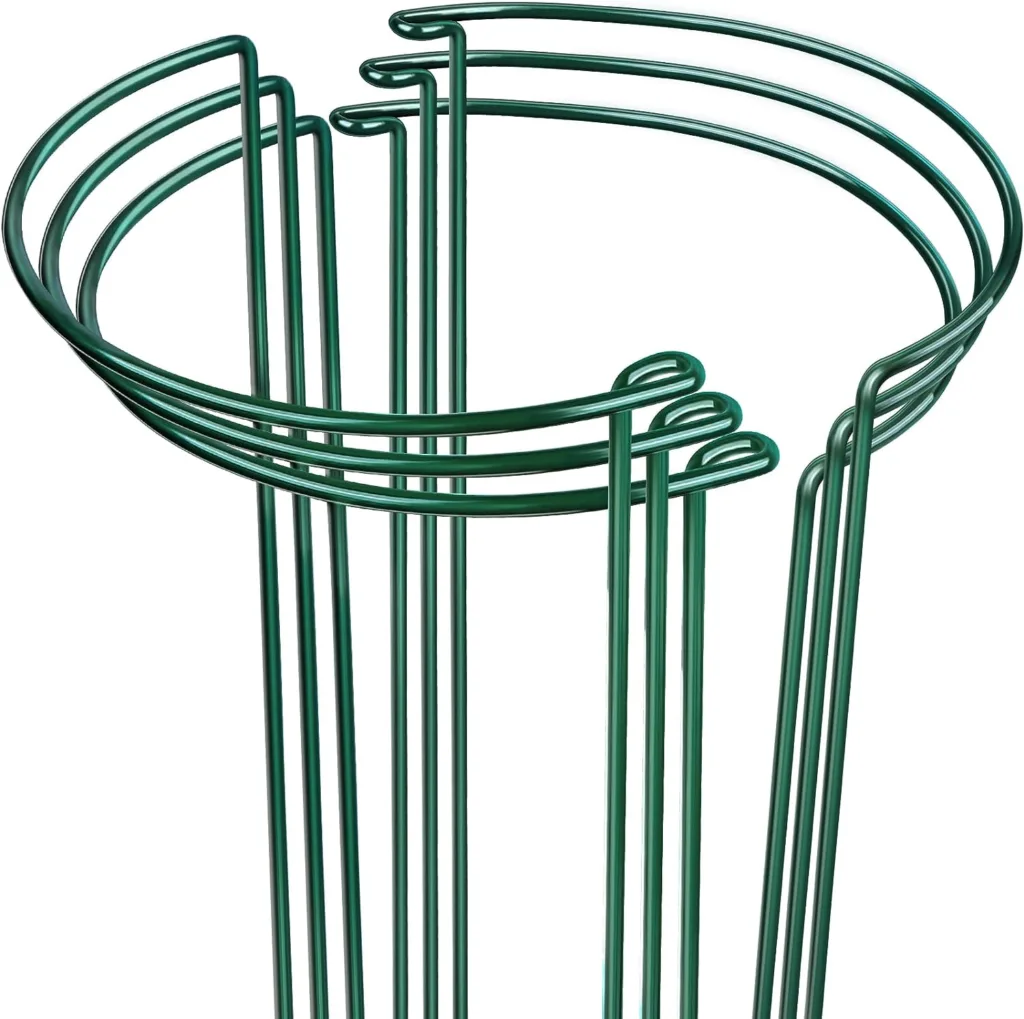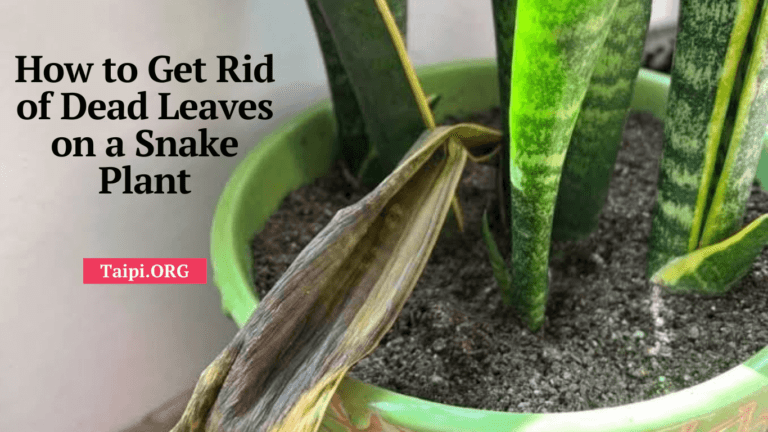How to Get Snake Plant to Grow Straight
IS YOUR snake plant leaning despite your efforts to make it grow straight? Growing a snake plant straight involves a combination of proper care, attention to environmental conditions, and occasional interventions. Continue reading to know how to get the snake plant to grow straight up.
To get the snake plant to grow straight, rotate your snake plant every few days to ensure all parts of the plant get an equal amount of light.
But there is more.
Ways to Get Snake Plant to Grow Straight

Here are a few other ways to get your snake plant to grow straight up:
Choose the Right Pot
Select a pot with good drainage to prevent overwatering, which can lead to root rot.
The pot should be large enough to accommodate the plant’s roots but not excessively large, as this can lead to instability.
Go for Well-Draining Soil
Use a well-draining potting mix designed for succulents or cacti.
A mixture of potting soil, perlite, and coarse sand can provide the right balance of aeration and moisture retention.
Maintain Proper Watering Techniques
Allow the soil to dry out between waterings. Overwatering can make the plant top-heavy and lead to leaning.
Water the snake plant sparingly, especially during the dormant winter months.
Provide Optimal Light Conditions
Snake plants are adaptable to different light conditions, but they prefer indirect sunlight.
Place the plant in a location with bright, filtered light to encourage upward growth.
Rotate the Plant
Rotate the pot occasionally to ensure even exposure to light on all sides. This helps prevent the plant from leaning toward the light source.
Avoid Crowding
Provide enough space between multiple snake plants to prevent competition for light, which can lead to leaning as they stretch toward the light.
Opt for a Support System

If the snake plant starts to lean, use stakes such as the 6-Pack LEOBRO Plant Stakes (pictured above) or any other support system to gently guide it back to an upright position.
Be careful not to damage the roots or stems while providing support.
Prune Your Plant
Trim any damaged or overly long leaves to maintain a balanced appearance.
Pruning can redirect the plant’s energy towards new growth and help it maintain an upright posture.
Watch Your Indoor Temperature and Humidity
Snake plants tolerate a wide range of temperatures, but they prefer warmer conditions.
Avoid exposure to cold drafts, as this can slow down growth and affect the plant’s posture.
Be Patient
Understand that snake plants have a slow growth rate. Be patient and allow the plant to adapt and grow at its own pace.
By providing the right conditions and occasional interventions, you can encourage your snake plant to grow straight and maintain an attractive, upright appearance.
Regular monitoring and adjustments to the care routine will help keep your snake plant healthy and thriving.
Snake Plant Care Pro Tips
Here are a few additional pro tips to ensure your snake plant grows straight and remains healthy:
Avoid Overcrowded Roots
If the snake plant outgrows its pot, consider repotting it into a larger container to prevent overcrowded roots. This promotes healthier growth and stability.
Use Root Bound Technique
Snake plants can tolerate being slightly root-bound. If you want to encourage more upward growth, you can allow the roots to fill the pot a bit before repotting.
Be Mindful About Fertilization
Use the best diluted liquid fertilizer during the growing season (spring and summer). The ideal fertilizer for the snake plant and most indoor plants should have an NPK ratio of 10-10-10 or 20-20-20.
Avoid over-fertilizing, as this can lead to weak and leggy growth.
Provide Support Early On
If you notice the snake plant starting to lean, provide support early to avoid the issue worsening. You can use stakes or ties, being careful not to constrict the plant.
Consider Grow Lights
If natural light is limited, supplement with grow lights to ensure the snake plant receives adequate light for photosynthesis and upward growth.
Regularly Dust the Leaves
Dust can accumulate on the leaves, hindering the plant’s ability to photosynthesize efficiently. Wipe the leaves gently with a damp cloth to keep them clean.
Mind the Temperature Fluctuations
Avoid placing the snake plant in areas with extreme temperature fluctuations, as this can stress the plant. Maintain a stable temperature to encourage steady growth.
Monitor for Pests
Keep an eye out for pests, such as spider mites, fungus gnats, mealybugs, or any other insects, that can attack your snake plant. Treat any infestations promptly.
Have and Maintain a Watering Schedule
Establish a consistent watering schedule based on the plant’s needs. Avoid erratic watering, as this can lead to stress and affect its posture.
Propagate for New Growth
Propagate the snake plant by dividing offsets or leaf cuttings. This not only produces new plants but also encourages the original plant to focus energy on new growth.
Observe the Natural Growth Pattern
Embrace the natural growth pattern of your snake plant. While you can guide its growth, respecting its inherent structure can result in a visually appealing and sturdy plant.
By incorporating these additional tips into your care routine, you’ll be well on your way to cultivating a healthy, upright snake plant.
Remember that plant care is often a dynamic process, and observing your plant’s behavior can provide valuable insights into its specific needs.
How to Get Snake Plant to Grow Straight FAQs
Q: How often should I water my snake plant?
A: Allow the soil to dry out between waterings. Water sparingly, approximately every 2-4 weeks, and adjust based on environmental conditions.
Q: Can I grow a snake plant in low-light conditions?
A: Yes, snake plants tolerate low light, but they prefer indirect sunlight. They can thrive in various light conditions but avoid prolonged periods of complete darkness.
Q: Why is my snake plant leaning?
A: Leaning can result from insufficient light, overwatering, or an unbalanced pot. Rotate the plant for even light exposure, provide support if needed, and check for proper drainage.
Q: How do I propagate a snake plant?
A: Snake plants can be propagated through division or leaf cuttings. Separate offsets from the main plant or place a healthy leaf cutting in the soil, allowing it to root.
Q: Do snake plants need fertilizer?
A: Yes, during the growing season (spring and summer), use a balanced, diluted liquid fertilizer every 4-6 weeks. Avoid over-fertilizing to prevent issues like leggy growth.
Final Thoughts on How to Get Snake Plant to Grow Straight
From the article, it is evident that fostering an upright and thriving snake plant involves a holistic approach to care.
It begins with selecting an appropriate pot and well-draining soil, maintaining a balanced watering schedule, and ensuring the plant receives adequate but indirect sunlight.
Proactive measures, such as rotating the plant, providing support when needed, and pruning for optimal growth, play crucial roles in maintaining its upright posture.
Attention to root health, consistent care practices, and patience in observing the plant’s natural tendencies contribute to a successful cultivation journey.
By embracing these guidelines, you can create an environment where your snake plant not only grows straight but also flourishes with resilience and vitality.








